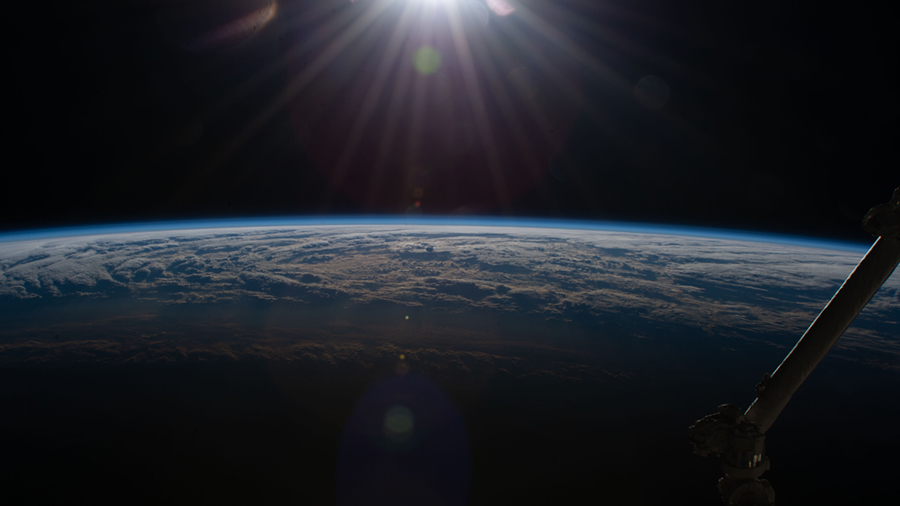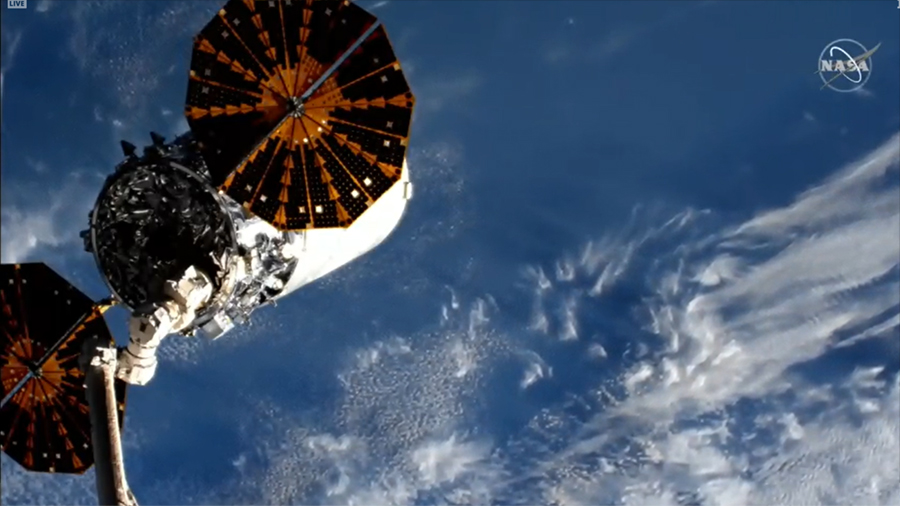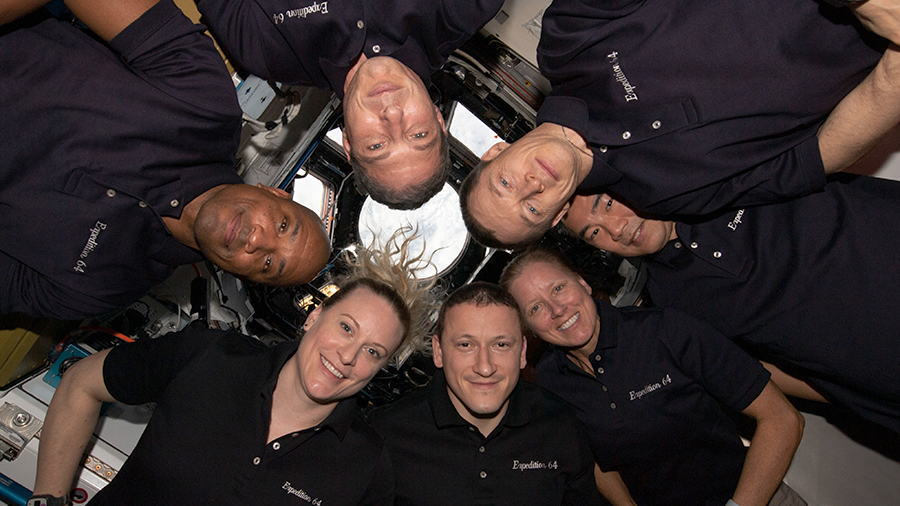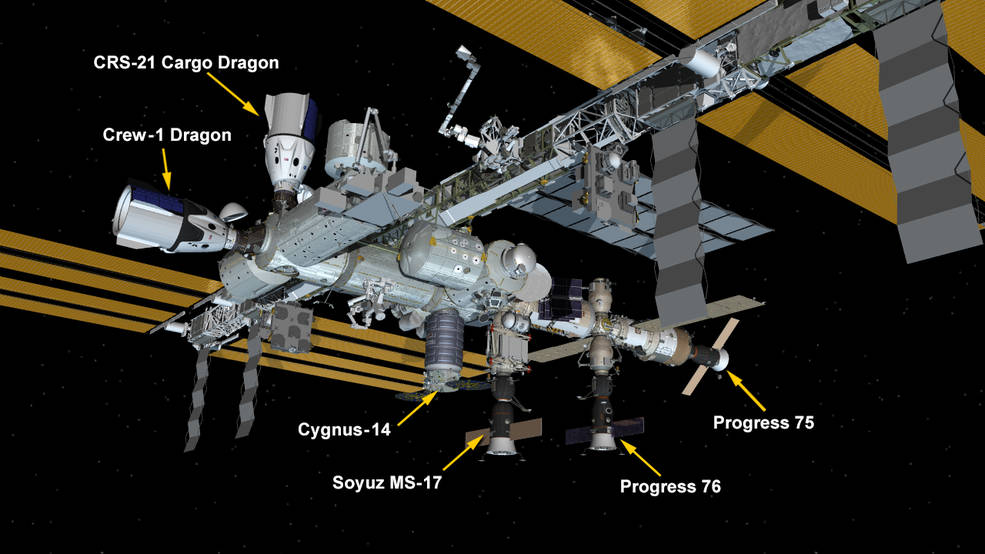
The Expedition 64 crew had a light duty day Thursday following a busy holiday season filled with space research and U.S. cargo ship departure preparations. Soon the astronauts will be ramping up for a set of International Space Station maintenance and upgrades spacewalks planned for January and February.
Final science experiments are wrapping up this week waiting to be packed inside the SpaceX Dragon cargo spacecraft and returned to Earth no earlier than Monday for analysis. NASA Flight Engineer Kate Rubins stowed microbial cultures in science freezers today that will soon be loaded inside the Cargo Dragon. The samples will be analyzed by scientists on the ground to understand the microbial risk to a spacecraft’s environment.
The Dragon is due to undock from the Harmony module’s space-facing international docking adapter on Monday at 9:25 a.m. EST live on NASA TV. Rubins will be on duty Monday monitoring Dragon’s undocking as it departs the station carrying several tons of hardware and completed space studies. NASA and SpaceX engineers will be on hand to retrieve the Dragon after its splashdown in the Atlantic Ocean.
A pair of spacewalks is targeted for the end of January for upgrades on the outside of the orbiting lab. U.S. astronauts Michael Hopkins and Victor Glover will be ramping up their preparations for the two spacewalks over the next several days. The duo will be outfitting science hardware on Europe’s Columbus laboratory module during the first spacewalk and will upgrade high definition video and camera gear on the second.
Two more spacewalks are planned in February for electrical work and to set up experimental hardware for a technology demonstration.



